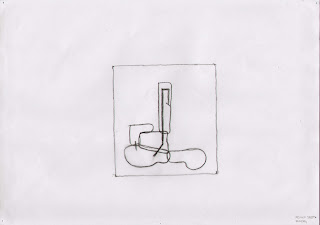
Office in a Small City, 1953
Edward Hopper
The solitary office worker in this scene is isolated both physically and emotionally. There is no indication of his particular profession, as he sits in his shirtsleeves; he appears, in fact, to be daydreaming rather than working. The postwar culture of American business is evident in the mass-produced office furniture, the impersonal atmosphere of the office itself, and the man's detachment from his unseen coworkers. Despite the light and air afforded by his corner office, he appears trapped in place. He is framed by the office window, and his head is profiled against another window and the wall of the building beyond, in a manner that suggests his containment within his environment. The solitude of the man, and the contrast between the stark, utilitarian upper story of the building and its decorative false front, visible at the lower right, suggest Hopper's own ambivalence toward modern urban life.
Source: http://www.metmuseum.org/toah/works-of-art/53.183










